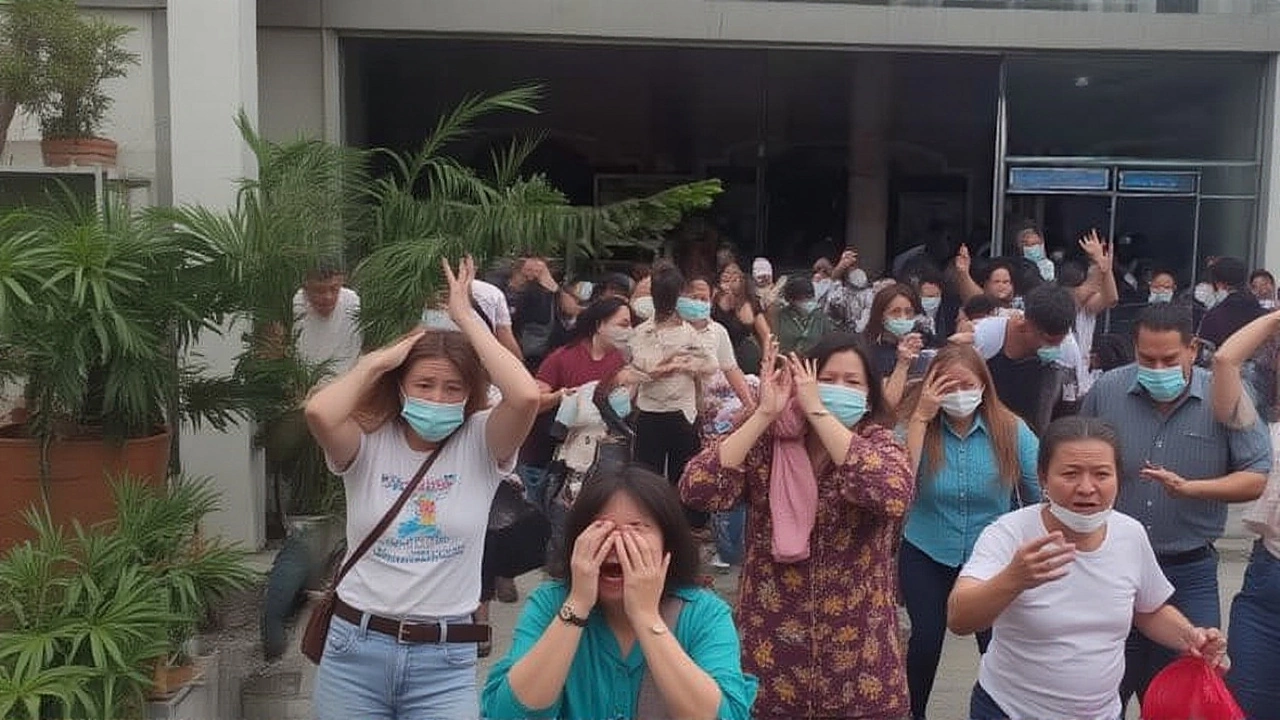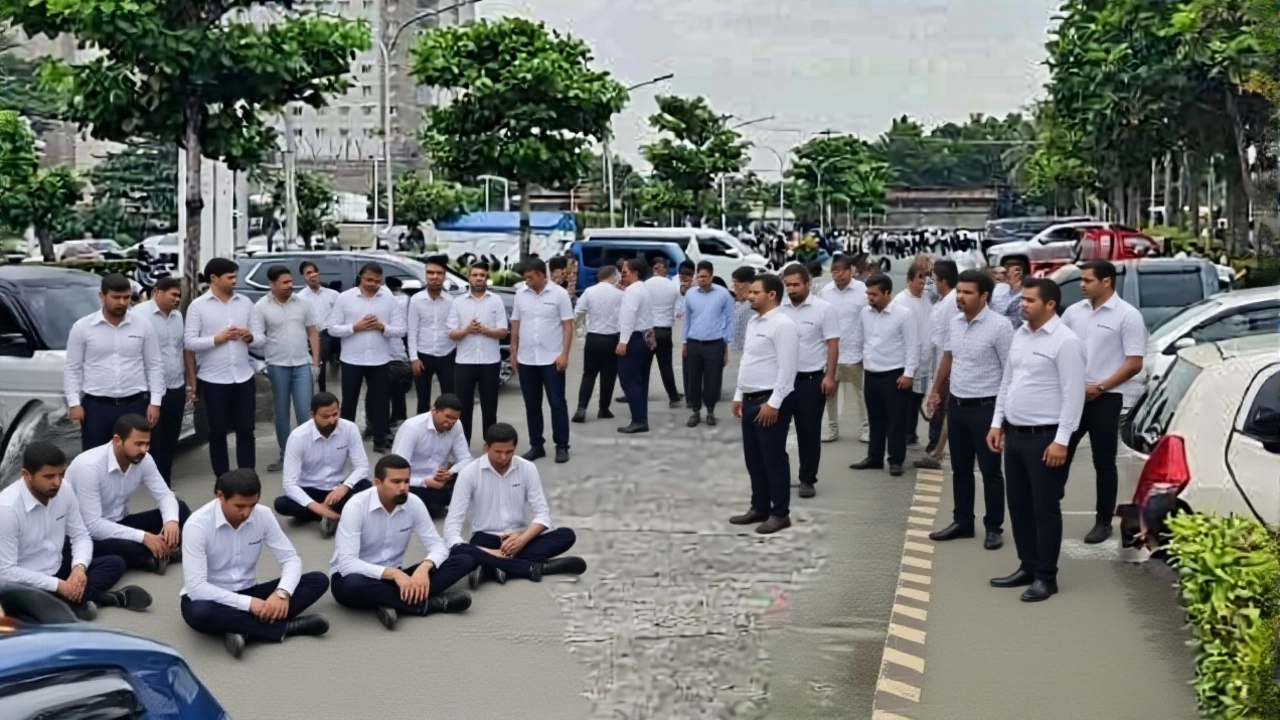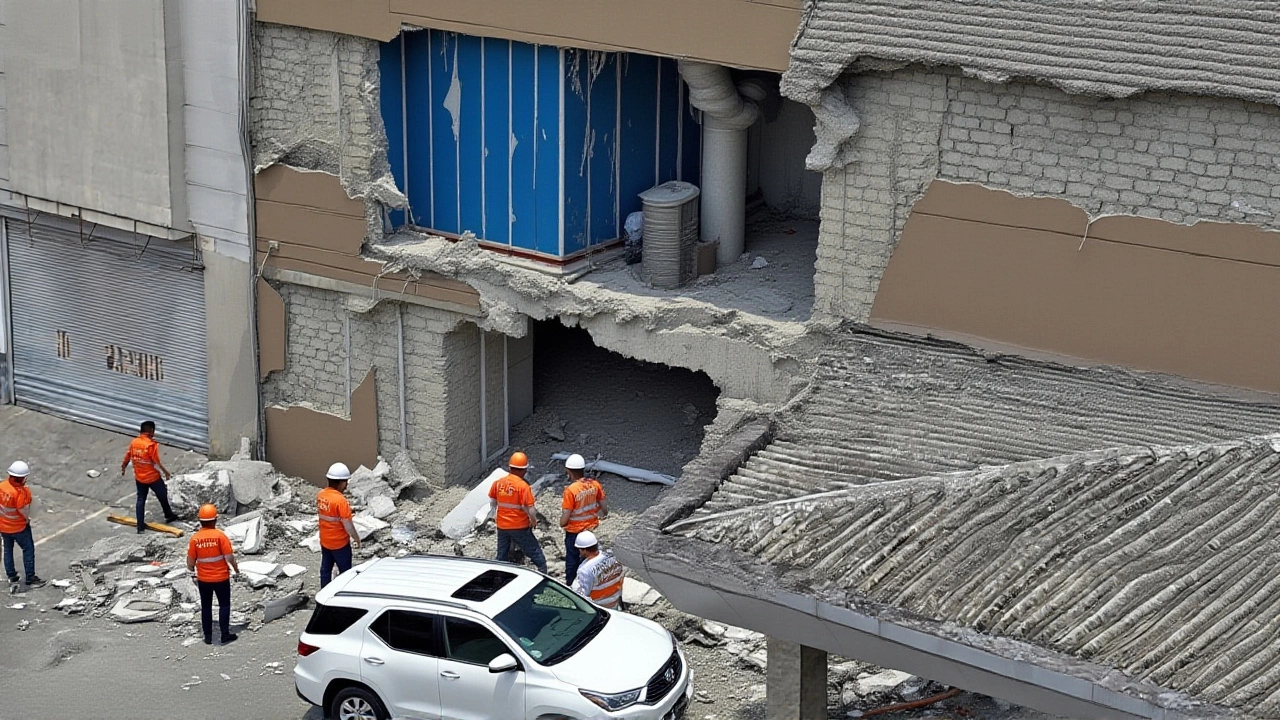At 9:43 a.m. Philippine Standard Time on Friday, October 10, 2025, a powerful 7.4‑magnitude earthquake struck eastern Mindanao, its offshore epicenter 48 km northeast of Manay in Davao Oriental. The tremor set off a double‑tremor sequence that included a second shock of magnitude 6.7–6.8, left at least two people dead and sparked a cascade of damage across the Davao Region.
What Happened
According to Philippine Institute of Volcanology and Seismology (PHIVOLCS), the quake originated 10 km below the seabed, registering a peak intensity of PEI VI (Very Strong) in Manay. By 4:00 p.m. PST the agency logged 299 aftershocks ranging from magnitude 1.2 to 5.8, a pattern typical of a double‑tremor event.
During the shaking, the PHIVOLCS Dr. Jose Yu, the agency’s director, warned that “the region remains vulnerable to strong aftershocks for the next several days.”
Immediate Impact
Manay bore the brunt of the shaking. The Manay District Hospital suffered foundation cracks, forcing the evacuation of roughly 200 patients to nearby facilities. Power lines snapped across the province, plunging the entire Davao Oriental area into darkness.
In Davao City, 347 individuals either fainted or sustained injuries ranging from minor bruises to broken bones. The Mayor Sebastian M. Duterte of Davao City ordered the immediate evacuation of the Francisco Bangoy International Airport. While the terminal escaped major damage, two incoming flights from Manila were diverted—one to Cebu and another to General Santos—as a precaution.
Educational institutions were not spared. Ateneo de Davao University reported cracked walls in several lecture halls, and Mapúa Malayan Colleges Mindanao saw portions of its library ceiling buckle. The University of the Philippines Mindanao, under the leadership of Dr. Ruperto R. Alonzo, shifted to asynchronous classes and a work‑from‑home arrangement until at least October 13.
Outside the urban centers, the quake triggered landslides in Montevista and a road‑blocking slide along the barangay road linking Camantangan and Canidkid. In Lupon, a residential building collapsed, trapping several families under rubble. Emergency responders later rescued 12 students from Digos City who were hospitalized after panic‑induced injuries.

Response and Rescue Efforts
The Bureau of Fire Protection (BFP) confirmed a chemical spill at San Pedro College in Davao City, which was contained within hours. Meanwhile, the Philippine Red Cross, led by Dr. Anselmo L. Alavarez, deployed rapid‑response teams to Manay, Davao City, and Tagum to set up triage centers and distribute relief kits.
Police stations in Panabo and Talaingod sustained structural damage, but officers continued to coordinate traffic diversions and assist in clearing debris. The Supreme Court of the Philippines reported that 36 of its regional courts suffered damage, prompting a temporary suspension of proceedings in affected municipalities.
Infrastructure crews worked through the night to restore electricity. By October 11, power had been partially restored to Davao Oriental, though some remote barangays remained dark. The Department of Public Works and Highways (DPWH) began assessing the integrity of the Tagum City Flyover, which swayed noticeably during the quake but remained standing.
Historical Context
The Philippines sits atop the Pacific Ring of Fire, experiencing several hundred tremors annually. Davao Oriental, in particular, has a grim seismic record: between 1885 and 2023, at least six major earthquakes ranging from magnitude 7.1 to 8.3 struck the region. The most notorious were the May 17, 1992 events (M 7.1 and M 7.5) that caused a local tsunami.
Just two weeks earlier, a magnitude 6.9 quake rattled Cebu, claiming 74 lives. The October 10 shock follows that tragedy, reminding residents that the aftershock season can extend for weeks after a major event.

What Lies Ahead
PHIVOLCS has issued an alert for “strong aftershocks” likely to occur over the next 72 hours, with magnitudes possibly reaching 5.0. Residents are urged to stay outdoors during shaking, avoid riverbanks, and keep emergency kits handy.
Local governments are coordinating with the National Disaster Risk Reduction and Management Council (NDRRMC) to conduct structural assessments of schools, hospitals, and public buildings. The NDRRMC’s spokesperson, Maria L. Cruz, said, “Our priority is to ensure that critical facilities are safe for the public before normal operations resume.”
Economically, the quake is expected to set back the Davao Region’s 2025 growth projection by roughly 0.4 percentage points, according to a preliminary report from the Bangko Sentral ng Pilipinas. Recovery funding will likely flow from both national allocations and international aid, though exact figures are still being negotiated.
- Key immediate actions: restore power, clear roadblocks, and provide medical aid.
- Mid‑term goals: structural retrofitting of schools and hospitals.
- Long‑term focus: improve early‑warning systems and community preparedness.
Frequently Asked Questions
How many people were injured in the earthquake?
Official reports list more than 600 injuries across Davao Oriental, Davao City, and surrounding towns, ranging from minor cuts to serious fractures. Hospitals in Manay and Davao City treated the majority of the cases.
What caused the brief tsunami alert?
The offshore epicenter displaced a significant volume of water, triggering a localized tsunami warning for coastal areas within a 300‑km radius. Wave heights were measured at under 0.3 m, and the alert was lifted after a ten‑minute assessment showed no imminent threat.
Which schools were most affected?
Ateneo de Davao University, Mapúa Malayan Colleges Mindanao, and the University of the Philippines Mindanao reported structural damage to classrooms and laboratories. The latter switched to remote learning until at least October 13, while the former two are conducting safety inspections before reopening.
What measures are being taken to prevent future building collapses?
The DPWH, in partnership with PHIVOLCS, is launching a province‑wide audit of existing structures. Buildings that fail to meet the updated seismic‑resistance standards will be retrofitted or barred from occupancy until reinforced.
How does this quake compare to previous ones in the region?
At magnitude 7.4, this event is the strongest to hit Davao Oriental since the 1992 double‑tremor sequence. Its intensity (PEI VI) matches the 2003 Davao del Sur quake, but the breadth of infrastructure damage and the triggered aftershock series make it one of the most disruptive in recent memory.
